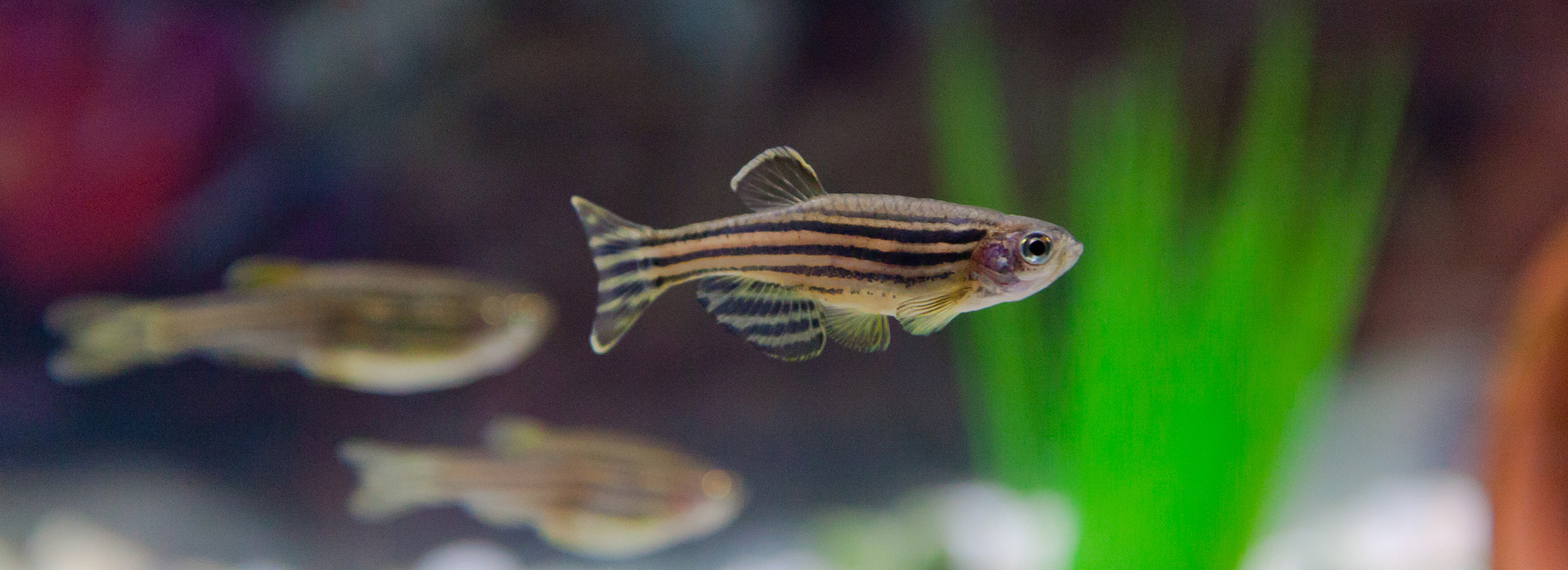
Zebrafish are fast growing: They hatch three days after fertilization and reach maturity in two to three months. They’re also vertebrates, like mammals, and have similar genes and cell types as well as highly complex social and learning behaviors. “Plus, they’re transparent, which makes them ideal for brain imaging studies,” adds Summer Thyme ’06, a postdoctoral fellow at the Schier Lab in Harvard’s Department of Molecular and Cellular Biology. The Scripps alumna was recently on campus to speak to students in the W.M. Keck Science Department about her lab’s use of zebrafish to identify the genes that may play a part in schizophrenia.
Schizophrenia is a disease of cognitive dysfunction, most well-known for symptoms such as delusions, hallucinations, and psychosis. “Schizophrenia is heritable, but not because of any single gene—there are hundreds of genes associated with it, but we don’t know what all of them are,” says Thyme. In order to start exploring which genes are part of the schizophrenia puzzle, her team genetically altered groups of sibling zebrafish, knocking out genes in half of the siblings and leaving the other half unaltered. They then observed and compared the brain activity and behavior of the “mutant” fish to the non-mutant siblings. One experiment, for example, looked at what’s called prepulse inhibition (PPI) taps: Typical zebrafish—and humans—will be less startled by a stimulus, like a loud noise, if that stimulus is preceded by a prepulse—a minor, warning stimulus. But the mutant fish had enhanced responses to a stimulus after given a prepulse—just like humans with schizophrenia.
All told, her team studied over 100 candidate genes and narrowed the set down to approximately three dozen that would be ideal for follow-up studies. But this basic-science research has added implications beyond the team’s discoveries for schizophrenia: they also found important phenotypes for epilepsy and autism, and the tools they developed can be used study disease genes involved in other neuropsychiatric and neurodevelopmental disorders.

“It’s thrilling to work on scientific problems on the interface of the medical field. There are so many diseases that have clear genetic bases, but we don’t understand the molecular mechanisms. My hope is that the basic research we do on important human genes will eventually help us better understand and treat human disease,” says Thyme. She will be continuing this work in her own laboratory, opening in summer 2019.
Thyme was first exposed to science and gained invaluable hands-on experience while a dual biology and chemistry major at Scripps. “I owe even being in this field to the professors in the W.M. Keck Science Department. I was not exposed to scientific research before coming to Scripps College, and my professors reached out to me and invited me to work in their labs very early on.”
Thyme’s guest lecture was supported by a Claremont Colleges intercollegiate neurosciences speaker series. “Working in the lab as an undergraduate at Scripps was a great experience, and an opportunity that is lacking for students at larger schools where there are many more students than there are spaces in labs. The focus on getting into the lab and doing real research is a really special part of the Keck community.”

